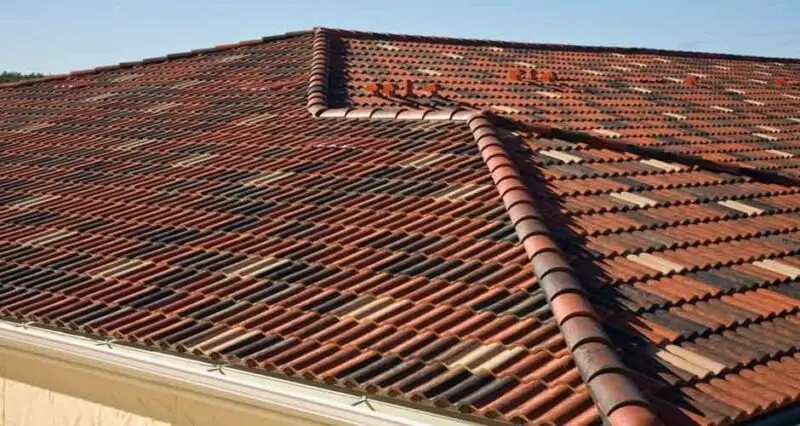
Did you know that regular roof inspections can help prevent costly damage down the line? By staying proactive and addressing issues promptly, you can extend the lifespan of your roof significantly.
But that’s just the beginning. There are several other crucial steps you can take to ensure your roof stays healthy and functional.
Let’s explore some of the key maintenance practices that will help you protect your home and your investment.
Ensure Proper Ventilation
Proper roof ventilation is essential for maintaining the health and longevity of your roof. Adequate airflow helps regulate temperature, moisture levels, and prevent issues like mold, rot, and ice dams. Without proper ventilation, heat and moisture can build up in your attic, causing shingles to deteriorate prematurely and increasing energy costs.
To ensure proper ventilation, start by checking your attic for any signs of poor airflow such as condensation, mold growth, or musty odors. Install vents along the eaves, ridge, and soffits to promote air circulation and prevent heat buildup. Consider adding a ridge vent or attic fan for additional ventilation in areas prone to high humidity or temperature fluctuations.
Regular Inspections
Regular roof inspections are essential for maintaining the health and longevity of your roof. By conducting regular inspections, you can catch any potential issues early on, preventing them from turning into costly repairs down the line.
When inspecting your roof, start by checking for any signs of damage such as missing or cracked shingles, sagging areas, or signs of water damage. It’s important to inspect both the interior and exterior of your roof to ensure a comprehensive assessment.
During your inspection, pay close attention to areas around vents, chimneys, and skylights, as these are common areas where leaks can occur. Look for any signs of wear and tear on the flashing and seals around these structures. Additionally, check the condition of your roof’s underlayment to ensure it’s still providing adequate protection against moisture.
Roof inspections should be scheduled at least twice a year, ideally in the spring and fall. If you notice any issues during your inspection, it’s important to address them promptly to prevent further damage to your roof. By staying proactive with inspections, you can prolong the life of your roof and avoid unexpected repairs.
Clean Gutters and Downspouts
Inspecting your gutters and downspouts regularly is crucial for maintaining the health and functionality of your roof. Clogged gutters can lead to water backing up on your roof, causing damage to the shingles and potentially leading to leaks inside your home. It’s recommended to clean out your gutters at least twice a year, especially in the fall when leaves are prone to accumulating.
To clean your gutters effectively, start by removing large debris by hand or with a scoop. Then, flush out the remaining dirt and smaller particles using a garden hose. Ensure that the downspouts are also clear of any blockages to allow proper water drainage. You can use a plumber’s snake or a pressure washer to clear out stubborn clogs in the downspouts.
Regularly cleaning your gutters and downspouts not only protects your roof but also helps prevent issues like water damage, mold growth, and even foundation problems. By investing a little time in maintenance, you can extend the lifespan of your roof and keep your home safe and dry.
Trim Overhanging Branches
To maintain the health of your roof and prevent potential damage, it’s essential to address overhanging branches that can pose a risk to your roof’s integrity. Overhanging branches can scrape against the roof surface during windy conditions, leading to shingle damage and even punctures. These branches also provide a pathway for pests like squirrels and raccoons to access your roof, causing further harm.
When trimming overhanging branches, it’s crucial to ensure that you or a professional undertake this task safely. Use proper tools such as pruning shears or saws designed for cutting branches to prevent any accidents. Start by trimming branches that are within a close range of your roof, especially those hanging directly above. Focus on removing dead or diseased branches that are more likely to fall during storms and cause significant damage.
Regularly inspect your roof for any branches that may be encroaching on its space. By keeping branches trimmed back and away from your roof, you can significantly reduce the risk of damage and prolong the lifespan of your roof.
Address Repairs Promptly
In order to maintain the structural integrity of your roof and prevent further damage, promptly addressing any necessary repairs is crucial. Even small issues like missing shingles, cracked flashing, or clogged gutters can lead to more significant problems if left unattended. Water leaks, mold growth, and structural weakening are just a few of the potential outcomes of neglecting repairs.
When you notice any signs of damage or wear on your roof, such as water stains on the ceiling, granules in the gutters, or daylight coming through the attic, it’s essential to act promptly. Ignoring these warning signs can result in costly repairs down the line. Hiring a professional roofer to assess and fix the issues promptly can save you money in the long run.
Regular inspections and maintenance can help catch problems early before they escalate. By being proactive and addressing repairs promptly, you can prolong the life of your roof and ensure that it continues to protect your home effectively.
Regularly inspect and clean your vents to remove any debris or obstructions that could hinder airflow. Additionally, consider consulting with a roofing professional to assess your ventilation system and make any necessary improvements to protect your roof and prolong its lifespan. Proper ventilation is a simple yet crucial aspect of roof maintenance that can significantly impact its health and durability.

